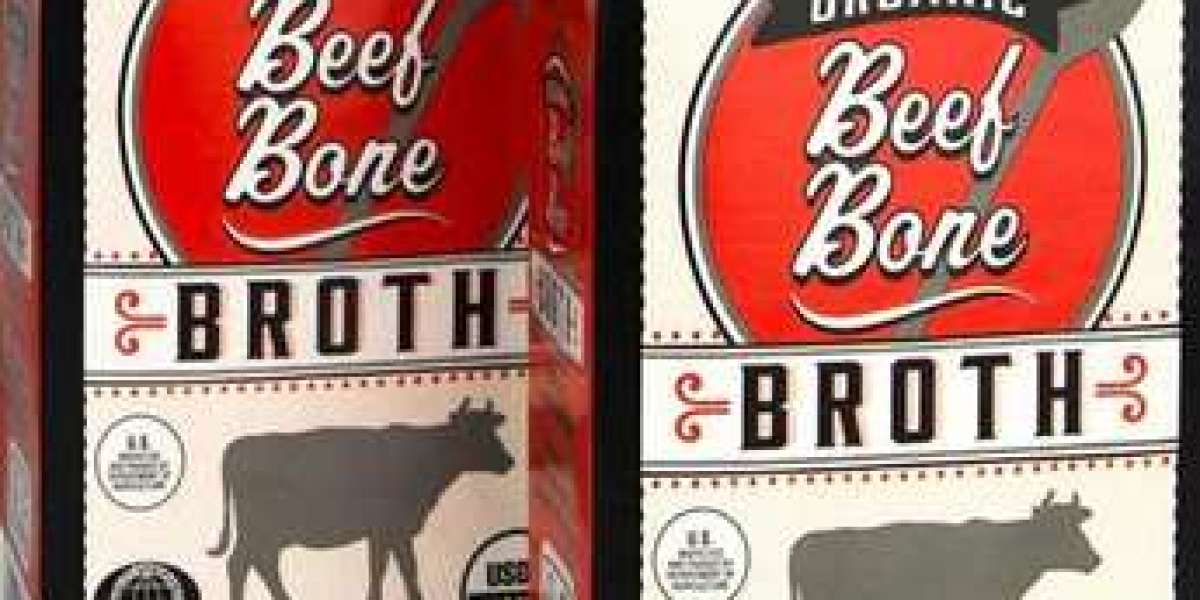Beef bone broth has taken the culinary world by storm, and for good reason. This rich, savory elixir is not just a comforting addition to your favorite dishes; it’s also packed with nutrients that can boost your health in various ways. Whether you're sipping it straight from a mug or using it as a base for soups and stews, beef bone broth offers an incredible depth of flavor and numerous benefits.
As more people adopt holistic approaches to nutrition, this age-old remedy has found its way back into modern kitchens. But what exactly makes beef bone broth such a powerhouse? Join us on this journey through its history, nutritional advantages, and tips for incorporating this delicious brew into your daily routine. Ready to discover why everyone is raving about beef bone broth? Let’s dive in!
What is Beef Bone Broth?
Beef bone broth is a flavorful liquid made by simmering beef bones, cartilage, and connective tissues in water. The process usually lasts anywhere from several hours to even days, allowing the nutrients to seep into the broth.
This slow cooking method extracts collagen, amino acids, and minerals like calcium and magnesium. The result is a nutrient-dense beverage that boasts a rich taste and numerous health benefits.
Unlike regular stock or broth, which may contain meat scraps or vegetables for flavoring, beef bone broth focuses on bones as its main ingredient. This distinctive approach enhances both the nutritional content and depth of flavor.
Enjoyed hot or cold, it serves as an excellent base for soups or sauces. Alternatively, many prefer sipping it straight for a nourishing boost throughout the day.
The History and Origins of Bone Broth
Bone broth has been a staple in kitchens around the world for centuries. Its origins can be traced back to ancient civilizations, where it was crafted from leftover bones and scraps. This practice ensured nothing went to waste.
The Chinese have long revered bone broth for its nourishing properties, dating back thousands of years. They believed it promoted vitality and overall health. Similarly, in Europe, cultures embraced simmering bones as a means of extracting nutrients during harsh winters.
Traditionally made over slow fires, these broths were more than just sustenance; they carried cultural significance. Recipes varied by region but shared common themes—simplicity and resourcefulness.
As culinary practices evolved, so did the appreciation for this humble elixir. Today’s resurgence is rooted not only in nostalgia but also in modern nutrition science that highlights its many benefits.
Nutritional Benefits of Beef Bone Broth
Beef bone broth is a nutrient powerhouse. It's rich in collagen, which supports joint health and skin elasticity. This makes it popular among those seeking beauty from within.
The amino acids found in bone broth, like glycine and proline, are essential for building muscle and repairing tissues. They also play a role in digestion by promoting gut health.
Minerals such as calcium, magnesium, phosphorus, and potassium leach into the broth during cooking. These nutrients contribute to strong bones and overall vitality.
Bone broth's natural gelatin may help soothe inflammation too. Many people find relief from digestive issues after incorporating it into their diets.
Whether sipped alone or used as a base for soups and sauces, beef bone broth offers numerous benefits that can enhance your overall well-being. Enjoying this nourishing elixir could be an easy addition to improve your health journey.
How to Make Your Own Beef Bone Broth
Making your own beef bone broth is simple and rewarding. Start by gathering high-quality bones, such as marrow or oxtail. Roasting them in the oven enhances the flavor; a 30-minute roast at 400°F does wonders.
Next, transfer the bones to a large pot or slow cooker. Add water—enough to cover everything—and toss in some aromatics like onions, garlic, carrots, and celery for extra depth. A splash of apple cider vinegar helps extract nutrients from the bones.
Bring it all to a gentle boil before reducing to low heat. Let it simmer for at least 12 hours; longer if you want richer flavors and more nutrients.
Skim off any foam that rises during cooking for clarity. Once ready, strain out solids using a fine mesh sieve and cool completely before storing in jars.
Homemade broth can be refrigerated for up to five days or frozen for even longer storage options!
Different Ways to Use Beef Bone Broth in Recipes
Beef bone broth is incredibly versatile and can elevate many dishes. Use it as a base for soups to add depth and richness. Just swap out water or store-bought stock for an instant flavor boost.
It shines in stews, too. The gelatin from the bones thickens the broth beautifully, making every spoonful comforting and satisfying.
Consider using beef bone broth in grains like rice or quinoa. Cooking them in this flavorful liquid infuses them with nutrients while enhancing their taste.
For a quick meal, try sautéing vegetables in beef bone broth instead of oil. It adds moisture without extra fats while keeping your veggies tender-crisp.
Don't forget about sauces! Reduce beef bone broth down to create delicious gravies or glazes that pack a punch with umami goodness.
There’s no limit to how you can incorporate this nutritious powerhouse into your cooking routine!
Tips for Buying and Storing Beef Bone Broth
When shopping for beef bone broth, look for high-quality ingredients. Check the label to ensure it’s made from grass-fed beef bones. This often means better flavor and nutritional value.
Consider purchasing broth in glass jars or BPA-free containers. Glass is a safer option that preserves taste without leaching chemicals.
If you opt for homemade broth, allow it to cool completely before storing it in the fridge or freezer. Use airtight containers to maintain freshness and prevent odors from mingling with other foods.
For longer storage, freeze individual servings in ice cube trays. This makes it easy to add a boost of flavor or nutrition whenever you need it.
Always remember to check expiration dates if buying pre-made options. Freshness is key for maximizing health benefits and ensuring great taste.
Conclusion
Incorporating beef bone broth into your diet can significantly enhance your overall health and wellness. Its rich nutrient profile offers numerous benefits, from improving gut health to supporting joint function.
Adding it to soups, stews, or even sipping it on its own are just a few simple ways to enjoy this nourishing elixir. You can also use it as a base for sauces or gravies, infusing dishes with deep flavor while boosting their nutritional value.
When you make beef bone broth at home, you're in control of the ingredients and flavors. This allows for customization based on dietary preferences or personal tastes. Even if time is tight, store-bought options abound—just be sure to choose high-quality brands that prioritize grass-fed bones and organic ingredients.
By making beef bone broth a staple in your kitchen, you're not only embracing an ancient culinary tradition but also investing in your health. Consider experimenting with different recipes and cooking methods until you find what resonates most with you. With every sip or spoonful, you'll be nurturing both body and soul.




